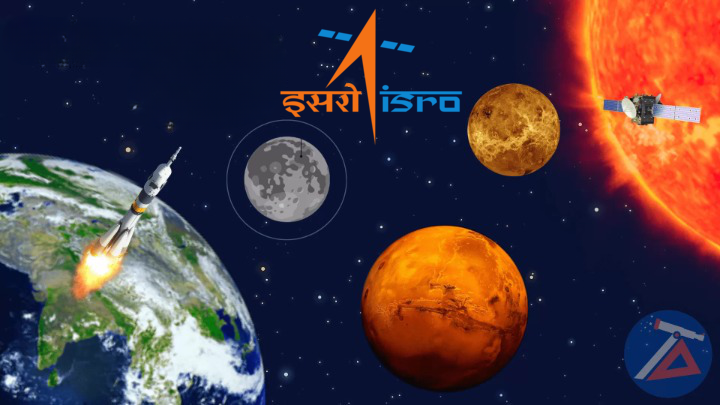
- The main objective of India’s space program is not techno-nationalism but to motivate and support its scientists as well as increase the curiosity for space exploration among the population.
- As Anand Mahindra put it, what Chandrayaan does for India is that it helps restore its pride & self-confidence.
- ISRO’s successes create belief in progress through science and give Indians the aspiration to lift themselves out of poverty.
Chandrayaan 3’s launch had the world in awe as the ambitious Lunar Mission by the Indian Space Research Organization (ISRO) made its soft landing as well as its first landing on the South Pole of the moon. India became the 4th nation to land on the moon and the first on the south side. There was no dearth of excitement amongst the scientists who observed the success, the Prime Minister who waved the small tricolour from Johannesburg and the common man, in varied professions who for the large part celebrated with happiness as well.
While the success was the effort of our scientists and the political will that will be necessary for us to push forward at every leap around such important events, it also highlights the basis of our space power.
Space Race in the post-Cold War era
Space power has become an important facet of any global player’s position nowadays. If the Cold War that brought the Americans and the Soviets to the brink of war had an important component, it was space itself. Space power has a historical element that ranges from curiosity to competition and today, even defence and offensive capabilities that decide a nation’s deterrence. Much of these patterns have been interpreted due to the bipolar nature of the then-prevalent world. So it is no surprise that if any other nation talks about space exploration, some unwarranted and biased criticism of the nation’s economy comes their way. People will remember how a BBC journalist had nonchalantly asked in 2019 when Chandrayan 2 was in the news if it was wise to push for space missions when a significant number of people are living in poverty.
This is nothing more than the mentality of a sore and jealous individual who shares the inherent need to mindlessly dip themselves in the pool of negativity that comes from their inability to think beyond their comfort zone. The same type of nonsense followed in 2023 but this time, the euphoria was more than they could anticipate and exploit. One can argue that it is similar to what was witnessed in America after the first manned mission in the Apollo missions and perhaps that comes closer to it.
India’s Objectives
India has different objectives behind the continued space exploration in the form of Chandrayan 1, Mangalyaan to Mars and others that followed. The important data collected about temperature, and the kind of elements found there explain the scientific push and curiosity that has always been part of Indian thought.
Unlike the Americans and the Soviets, India has had a different approach to its space program. After Kargil, India realised the extent of its lack of preparedness in intelligence, surveillance and reconnaissance (ISR ). India is not only learning from the Chinese but also from the old space race that happened between the US and the USSR. While India has planned low-orbit missions into space, it is also beaming at its demonstrations with an ASTAT launch in 2019. Not only did they effectively address an important response to China but also managed to gain support and inspiration from the earlier space race.
By 2030, India aims to increase funding in its space programs from 2% to 9% in terms of the GDP. While there are miles to go towards even matching up to China, the Indian success with Mangalyaan and Chandrayaan 3 is promising. India has now planned to send a probe to the sun with the name ‘Aditya L1‘, which will be launched on the 2nd of September in 2023. This probe will be studying the sun’s dynamics and space weather. According to ISRO, it will place the probe in a halo orbit around the Lagrangian point (L1) of the Sun-earth system. The next mission is to the planet Venus known as ‘Shukrayaan’ to study its volcanic conditions and the surface as well. ISRO chairman S. Somanath stated that either the mission will be launched in December 2024 or in an alternative year of 203. Eventually, India wishes to send manned missions to Mars in the form of ‘Gaganyaan 2’ which is scheduled to launch in 2025 in the LVM3 rocket.
Is India’s Space Program Techno-Nationalism?
The term, ‘Techno-nationalism‘ was coined by Maurice Charland in 1986. It’s apparently a new strain of mercantile thinking that links technological innovation and capabilities directly to a nation’s national security, economic prosperity and social stability. In all honesty, techno-nationalism seeks to attain and safeguard competitive advantage for its stakeholders, be it local or global to gain advantage for geopolitical reasons. Now, scholars tend to feel this has started because of the China and US rivalry. But this is a common occurrence in history and this has not changed much in theory.
Many have gone to the extent of accusing the Indian government of indulging in such Techno-Nationalism and using space exploration-based events to further nationalism. While it sounds like a good plan for a political campaign, it’s important to understand that ISRO is not a new organisation that started under the current government. Neither has there been any indication that significant successful feats of the past will be ignored. In fact, an important picture is to celebrate the cycle that carried an important part of a rocket in one of the first launches that were made under the guidance of Dr. Vikram Sarabhai, the father of the Indian Space Program. Even Dr. APJ Abdul Kalam, who had experience working under different political dispensations is respected across the country.
India has recently announced a collaboration with America and signed the Artemis Accords that enables it to invest and partner for future space programs. ISRO is planning a joint lunar mission with Japan’s space agency and collaborating with the US Jet Propulsion Laboratory on an advanced radar satellite called NISAR. Now if indeed techno-nationalism was the point to ponder, India wouldn’t have engaged with countries like the US, Russia, Japan and even Australia etc. This is an example of how a nation of the Global South has made a leap to have a close relationship that has propelled it to be capable and engage with nations of the first world or the Global North for important achievements that have the ability to change the course of mankind in many ways. Moreover, ISRO’s launch vehicles have been used by private companies from Singapore and even NASA which shows a booming space sector in India.
Techno-nationalism will eventually keep all states on their toes, wanting to outrun each other. This is seen in the case of both China and India as seen in their policy to pursue their space programs independently, away from the influence of America and the USSR. India’s position is to not join the International Space Station but to build its own space station eventually after the Mars missions. The main objective behind India’s space program is not techno-nationalism but to motivate and support our scientists as well as increase the curiosity for space exploration among the population. Hence, as long as techno-nationalism dictates a space program, mutual cooperation will be on shaky grounds and in such a scenario, peace would be the ultimate casualty.
As we have seen, India proves that techno-nationalism isn’t the basis of its space program. It plays a limited role only when it comes to the motivation that is behind the Indian achievement in space science. An eloquent statement by Anand Mahindra, the Chairman of Mahindra Group, showcases the idea of what essentially is close to the objective of India’s space program. He was responding to a video that went viral after the success of Chandrayaan 3. His statement included a significant part that I would like to quote which is a more fitting expression of India’s space power in my opinion.
"The truth is that, in large part, our poverty was a result of decades of colonial rule, which systematically plundered the wealth of an entire subcontinent. Yet the most valuable possession we were robbed of was not the Kohinoor Diamond but our pride & belief in our own capabilities."
“Because the goal of colonisation—its most insidious impact—is to convince its victims of their inferiority. This is why investing in BOTH toilets AND space exploration is not a contradiction."
"Sir, what going to the moon does for us is that it helps restore our pride & self-confidence. It creates belief in progress through science. It gives us the aspiration to lift ourselves out of poverty. The greatest poverty is the poverty of aspiration."
(Anhad Jakhmola is a postgraduate scholar in international relations. He has his undergraduate degree in history and is pursuing his Ph.D. in Defence and Strategic Studies. He is a columnist for many portals and is a keen public speaker in debates and discussions. Views expressed are author’s own)

